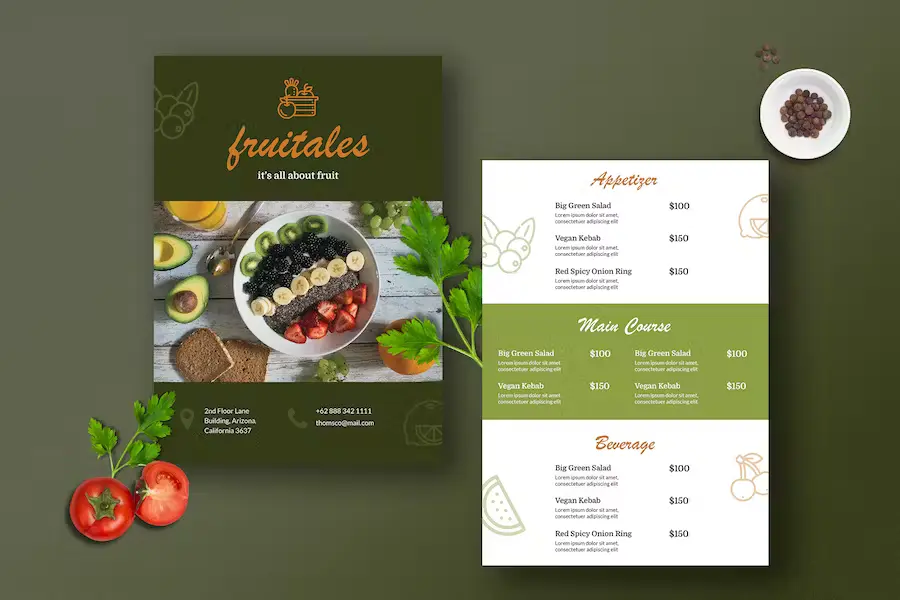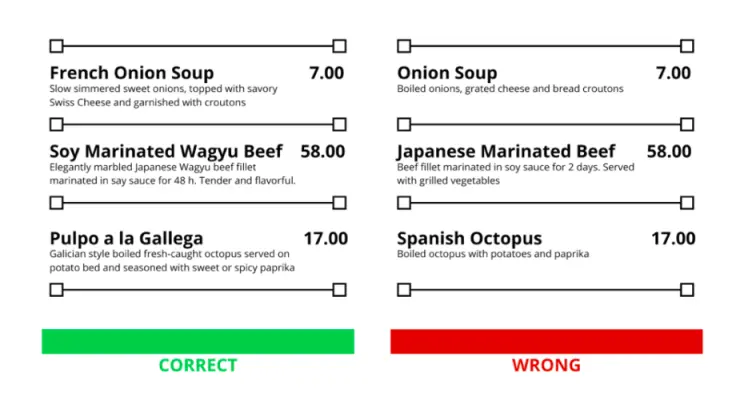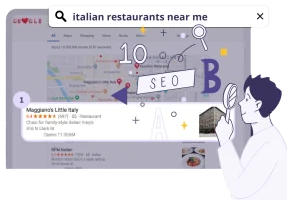Your menu is more than just a list of items; it’s a strong marketing tool that can draw clients in, highlight your culinary specialties and increase sales. To help you create an irresistible and impactful menu, we’ll cover tips on menu layout, size, and composition. So let’s get going!
1. Menu layout for visual appeal

A visually pleasing menu layout can draw guests in and improve their eating experience:
Clear sections:Organise your menu into logical sections, such as starters, entrées, desserts and drinks. Customers will find it simpler to navigate and find what they’re looking for.
Eye-catching typography:Pick legible typefaces that complement the logo of your restaurant. Think about using various font sizes and styles to emphasise dish names, descriptions and pricing.
White space:Make good use of white space by not over-stuffing your menu. Each dish should have enough white space surrounding it for the words and photographs to stand out. This makes the menu easier to read and reduces visual clutter.
Eye-catching visuals: Add pictures of your signature dishes using high-resolution photos or illustrations. Visuals can stimulate appetite and tempt customers to order specific items.
2. Keep your menu short and sweet
The amount of food on your menu is quite important to the whole eating experience:
Prioritise quality over quantity:Keep your menu short and to the point. Don’t overwhelm clients with a long range of options.
Less options per category: Offer a carefully curated selection of dishes within each category. Customers may find it difficult to decide when there are too many options, which can also lengthen the ordering process.
Seasonal specialties: Include chef specials or seasonal options. This enables you to draw attention to exclusive offers that are available just temporarily, generating excitement and urgency.
3. Descriptions that sizzle

Compelling menu descriptions can bring your dishes to life and tempt customers to order:
Be descriptive: Describe the flavours, textures and distinctive features of each meal using tempting adjectives and colourful language. Use words to paint an image.
Highlight ingredients:Mention key ingredients that make each dish special. This helps customers with specific dietary preferences or restrictions to identify suitable options.
Incorporate storytelling:Tell the tale behind specific dishes, showcasing their cultural relevance, sources of inspiration or ties to your restaurant’s history. This adds depth and creates a memorable experience for customers.
Pricing strategy: Implement a thoughtful positioning of prices. Avoid using currency symbols because they may serve as a reminder of the price and might sway customers’ ordering decisions.
To sum up
Layout, size and composition all need to be carefully considered when creating an attractive menu.
By organising your menu in a visually appealing manner, keeping it concise and user-friendly, and crafting enticing descriptions, you can create a menu that captivates customers and drives sales
Unlock the tips that will help you stand out from the crowd and get more bookings!

Learn how to save time, reduce stress and fill your restaurant while you sleep!

Stephanie Paris
Gen-Z marketing coordinator bringing fresh energy to web and graphic design, with a weekend habit of chasing adventure.

Stephanie Paris
Gen-Z marketing coordinator bringing fresh energy to web and graphic design, with a weekend habit of chasing adventure.









